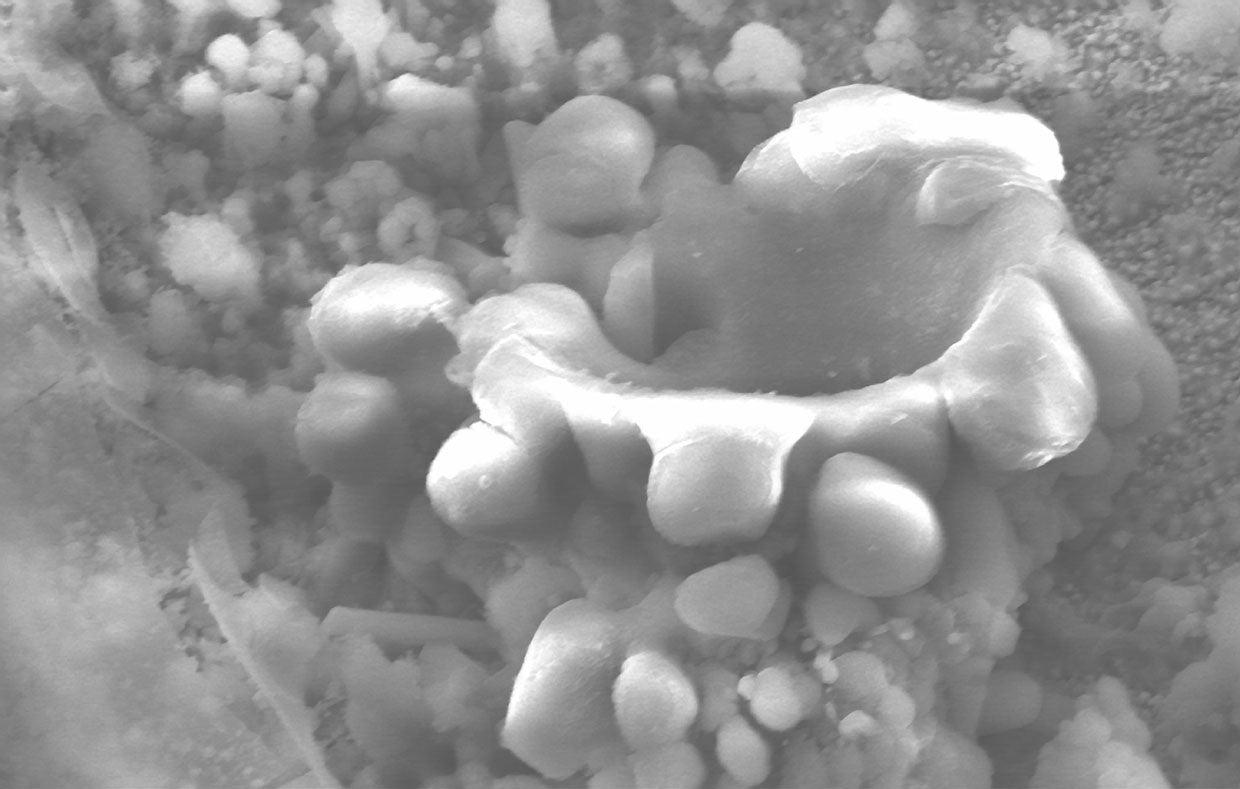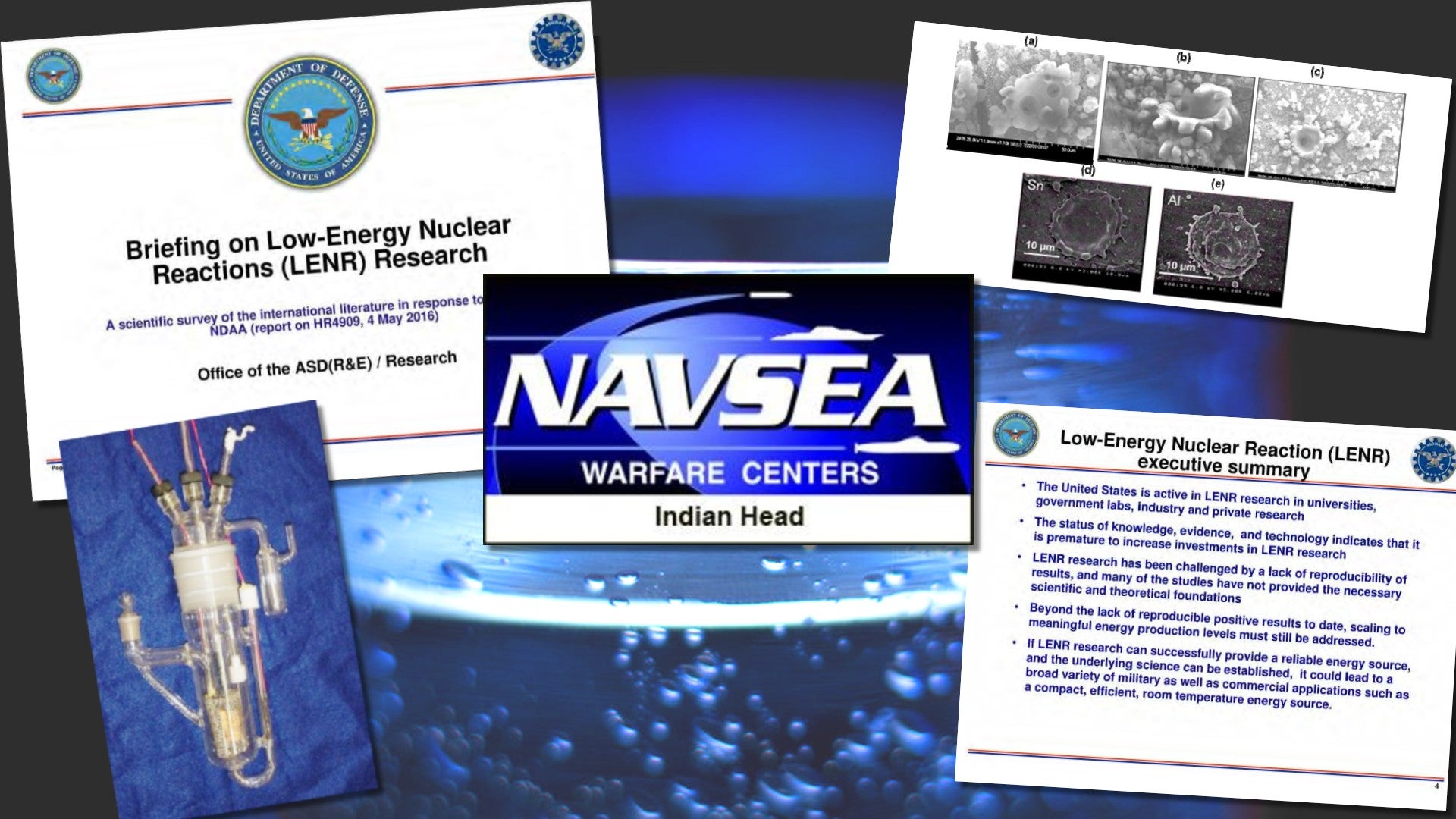Winston
Lorenzo von Matterhorn
- Joined
- Jan 31, 2009
- Messages
- 9,560
- Reaction score
- 1,748
Whether Cold Fusion or Low-Energy Nuclear Reactions, U.S. Navy Researchers Reopen Case
Spurred on by continued anomalous nuclear results, multiple labs now working to get to bottom of story
22 Mar 2021
https://spectrum.ieee.org/tech-talk...ear-reactions-us-navy-researchers-reopen-case
After more than three decades of simmering debate in specialized physics groups and fringe research circles, the controversy over cold fusion (sometimes called low-energy nuclear reactions or LENRs) refuses to go away. On one hand, ardent supporters have lacked the consistent, reproducible results and the theoretical underpinning needed to court mainstream acceptance. On the other, vehement detractors cannot fully ignore the anomalous results that have continued to crop up, like the evidence for so-called “lattice-confinement fusion” adduced last year by a group at NASA’s Glenn Research Center.
Scientists at the Naval Surface Warfare Center, Indian Head Division have pulled together a group of Navy, Army, and National Institute of Science and Technology (NIST) labs to try and settle the debate. Together, the labs will conduct experiments in an effort to establish if there’s really something to the cold fusion idea, if it’s just odd chemical interactions, or if some other phenomenon entirely is taking place in these controversial experiments.
[snip]
But still, lingering interesting results continued to emerge. Aside from the recent promising findings from NASA, Google published a paper in Nature in 2019 revealing that the company had spent US $10 million to research cold fusion since 2015. The company teamed up with researchers at institutions including MIT, the University of British Columbia, and Lawrence Berkeley National Laboratory. The research group found no evidence of classic Pons-Fleischmann-style cold fusion, but it did find evidence of the larger umbrella category of LENRs—suggesting (as the NASA group also reported) that nuclear fusion may be possible in locally-hot sites in otherwise room temperature metals.
“We got our impetus from the Google paper appearing in Nature,” says Carl Gotzmer, Indian Head’s Chief Scientist. Gotzmer’s duties include keeping the Navy abreast of the latest scientific developments. Gotzmer says his cold fusion/LENR interest developed after attending the International Conference on Cold Fusion in 2003. After a four-hour conversation with Fleischmann himself, and seeing presentations from across the world giving evidence of nuclear transmutations, he says he began to follow this field in earnest.
“Quite frankly, [to] other folks who have tried this over the years, it was considered a career ender,” says Gotzmer. But the Indian Head team decided that, as a government lab, they had a little more freedom to pursue a controversial topic, so long as it also offered up the prospect of rewarding scientific results.
[snip]
Barham describes Indian Head’s role in the new project as that of an “honest broker.” “Our main task is to try and collect the data that’s going to come in from, for example, the US Naval Academy, the Army Research Laboratory, and [NIST],” Barham says. He explains that different laboratories—all together, five are participating in the investigation—can provide different detectors and other equipment suited to exploring particular research questions. Indian Head can then coordinate materials and research between labs. And when the data starts to come in, the researchers at Indian Head can not only assess the data’s quality themselves, but ensure the other labs have that data available to review as well.
The Navy researchers are taking as their guiding inspiration the thirty years of literature that has been published on cold fusion, LENRs, and adjacent topics. They said a literature review of these results pointed them toward the best metals for their experiments, common refrains in experimental set ups, and so on.
The researchers say they hope to publish their initial results by the end of the year. “I think the most important thing is to reveal a mechanism by which the phenomenon works,” says Gotzmer. “Because if you understand the mechanism, then you can extrapolate into better experiments and make it more reproducible. There’s many mechanisms which have been proposed, but no one’s really nailed down completely what the nitty-gritty science is.”
ColdFusion (Burn Water) Music Mix 2019
Spurred on by continued anomalous nuclear results, multiple labs now working to get to bottom of story
22 Mar 2021
https://spectrum.ieee.org/tech-talk...ear-reactions-us-navy-researchers-reopen-case
After more than three decades of simmering debate in specialized physics groups and fringe research circles, the controversy over cold fusion (sometimes called low-energy nuclear reactions or LENRs) refuses to go away. On one hand, ardent supporters have lacked the consistent, reproducible results and the theoretical underpinning needed to court mainstream acceptance. On the other, vehement detractors cannot fully ignore the anomalous results that have continued to crop up, like the evidence for so-called “lattice-confinement fusion” adduced last year by a group at NASA’s Glenn Research Center.
Scientists at the Naval Surface Warfare Center, Indian Head Division have pulled together a group of Navy, Army, and National Institute of Science and Technology (NIST) labs to try and settle the debate. Together, the labs will conduct experiments in an effort to establish if there’s really something to the cold fusion idea, if it’s just odd chemical interactions, or if some other phenomenon entirely is taking place in these controversial experiments.
[snip]
But still, lingering interesting results continued to emerge. Aside from the recent promising findings from NASA, Google published a paper in Nature in 2019 revealing that the company had spent US $10 million to research cold fusion since 2015. The company teamed up with researchers at institutions including MIT, the University of British Columbia, and Lawrence Berkeley National Laboratory. The research group found no evidence of classic Pons-Fleischmann-style cold fusion, but it did find evidence of the larger umbrella category of LENRs—suggesting (as the NASA group also reported) that nuclear fusion may be possible in locally-hot sites in otherwise room temperature metals.
“We got our impetus from the Google paper appearing in Nature,” says Carl Gotzmer, Indian Head’s Chief Scientist. Gotzmer’s duties include keeping the Navy abreast of the latest scientific developments. Gotzmer says his cold fusion/LENR interest developed after attending the International Conference on Cold Fusion in 2003. After a four-hour conversation with Fleischmann himself, and seeing presentations from across the world giving evidence of nuclear transmutations, he says he began to follow this field in earnest.
“Quite frankly, [to] other folks who have tried this over the years, it was considered a career ender,” says Gotzmer. But the Indian Head team decided that, as a government lab, they had a little more freedom to pursue a controversial topic, so long as it also offered up the prospect of rewarding scientific results.
[snip]
Barham describes Indian Head’s role in the new project as that of an “honest broker.” “Our main task is to try and collect the data that’s going to come in from, for example, the US Naval Academy, the Army Research Laboratory, and [NIST],” Barham says. He explains that different laboratories—all together, five are participating in the investigation—can provide different detectors and other equipment suited to exploring particular research questions. Indian Head can then coordinate materials and research between labs. And when the data starts to come in, the researchers at Indian Head can not only assess the data’s quality themselves, but ensure the other labs have that data available to review as well.
The Navy researchers are taking as their guiding inspiration the thirty years of literature that has been published on cold fusion, LENRs, and adjacent topics. They said a literature review of these results pointed them toward the best metals for their experiments, common refrains in experimental set ups, and so on.
The researchers say they hope to publish their initial results by the end of the year. “I think the most important thing is to reveal a mechanism by which the phenomenon works,” says Gotzmer. “Because if you understand the mechanism, then you can extrapolate into better experiments and make it more reproducible. There’s many mechanisms which have been proposed, but no one’s really nailed down completely what the nitty-gritty science is.”
ColdFusion (Burn Water) Music Mix 2019





